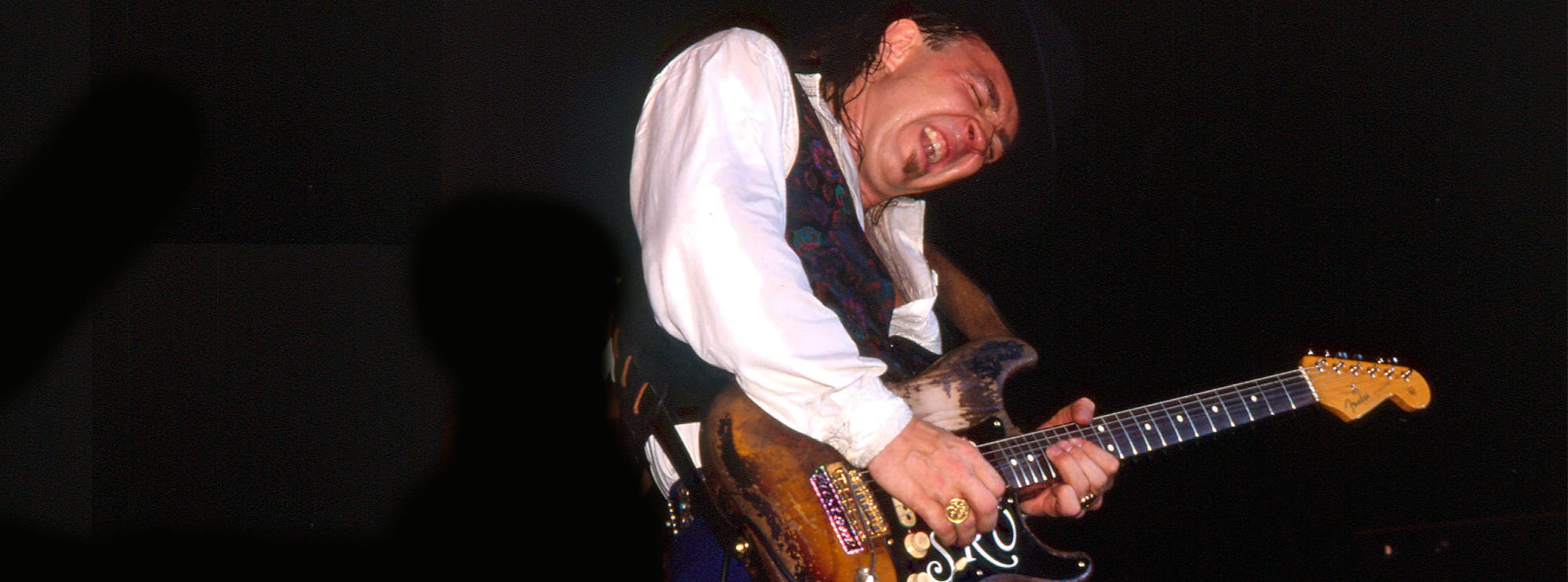In the Light by Led Zeppelin – Guitar Lesson Breakdown
“In the Light” is one of Led Zeppelin’s most experimental and atmospheric tracks, featured on their iconic 1975 album Physical Graffiti. Known for its eerie synth intro, dramatic dynamic shifts, and layered arrangements, this track presents a fascinating journey for any guitarist looking to explore beyond traditional rock song structures. At LickLibrary.com, our note-for-note guitar lesson breaks down every section of this progressive Zeppelin classic with precision and clarity.
The guitar in “In the Light” might be more understated than in some of the band’s harder-hitting tracks, but it’s a masterclass in musicality, texture, and phrasing. This lesson focuses on four core guitar techniques that feature prominently throughout the track: alternate picking, syncopated rhythms, string bending, and vibrato. These techniques are broken down in detail to help you build precision, control, and expressive depth in your playing. This lesson is taught by Danny Gill.
Techniques Used
Alternate Picking
The riff-driven sections of “In the Light” rely on clean, consistent alternate picking to maintain rhythmic drive and clarity, particularly during the more angular and syncopated passages. Efficient picking is key to keeping these lines tight and in the pocket.
Benefit to the player: Developing alternate picking improves your precision, speed, and ability to articulate complex riffs cleanly. It’s a fundamental skill for any guitarist looking to improve control and endurance in both rhythm and lead contexts.
Syncopated Rhythms
Much of the song’s impact comes from its clever use of syncopated rhythms—off-beat accents and unexpected rhythmic placements that create tension and groove. Page’s rhythm work demands tight coordination with the rhythm section and careful attention to timing.
Benefit to the player: Mastering syncopation boosts your rhythm guitar skills, improves timing, and sharpens your sense of musical phrasing. It also trains you to lock in with a drummer or backing track more effectively, a crucial skill for both live performance and studio work.
String Bending
In several lead passages, string bending is used to inject vocal-like expressiveness into Page’s phrases. Whether subtle quarter bends or full-step climactic movements, the bends are always deliberate and emotive.
Benefit to the player: String bending builds finger strength, control, and pitch accuracy. It allows you to infuse solos with emotional expression and helps train your ear to hear and target specific intervals.
Vibrato
Page’s expressive vibrato technique is key to his signature sound, and it’s used throughout “In the Light” to sustain and shape the emotional intensity of his notes. Vibrato gives his playing a human touch and adds depth to sustained tones.
Benefit to the player: Developing a strong vibrato adds personality to your playing and makes your leads more captivating. It improves finger control and enhances the vocal quality of your phrasing, making even simple notes stand out.
About the Song and Guitar Style
“In the Light” opens with an otherworldly drone created by John Paul Jones' synthesizers, before launching into a haunting guitar-led section. From there, the track unfolds with dynamic swells, angular riffs, and contrasting moods—moving from atmospheric balladry to pounding rock energy.
Jimmy Page’s guitar parts throughout are tastefully constructed and layered, relying more on tone and phrasing than sheer technical display. His playing moves between soaring bends, arpeggiated textures, and rhythmic stabs, all designed to support the evolving structure of the song. This makes “In the Light” an excellent study in musical arrangement and dynamic sensitivity.
About the Guitar Player – Jimmy Page
Jimmy Page, the architect of Led Zeppelin’s sound, is known not only for his legendary riffs and solos but also for his ability to push sonic boundaries. “In the Light” is a perfect example of Page’s creative range—combining textural depth with melodic clarity and rhythmic invention.
His influence extends far beyond rock, as he frequently drew from folk, classical, Eastern music, and avant-garde sound design. In this track, Page masterfully balances simplicity and experimentation. Learning his parts from “In the Light” provides guitarists with a deeper understanding of how to shape a song with both restraint and flair.
Summary
Learning “In the Light” with our note-for-note guitar lesson at LickLibrary.com gives you an opportunity to delve into one of Led Zeppelin’s most innovative and atmospheric compositions. With its layered textures, dynamic shifts, and moody phrasing, the song offers a diverse set of challenges that go far beyond straightforward riff playing.
You’ll gain valuable experience in alternate picking for clean articulation, syncopated rhythms for tight groove playing, string bending for emotional expression, and vibrato for dynamic phrasing. These techniques not only serve this track but are transferable to a wide range of playing styles and genres.
“In the Light” showcases Jimmy Page’s musical inventiveness and subtlety, making it an essential study for any guitarist looking to go deeper into phrasing, dynamics, and tone. It’s a masterclass in how to serve the song while still making a powerful musical statement.
Techniques Used in This Lesson
Bring the atmospheric brilliance of “In the Light” to your own playing with our in-depth guitar lesson at LickLibrary.com—and unlock a whole new level of expression and groove in your technique.

About The Tutor
Tutor Profile
Danny Gill
Danny Gill is, without a doubt, the most loved tutor by our community. With an incredible array of DVDs and web lessons for LickLibrary covering a wide variety of topics all of which he covers with incredible detail, it's no wonder he carries as much respect as he does. As...




